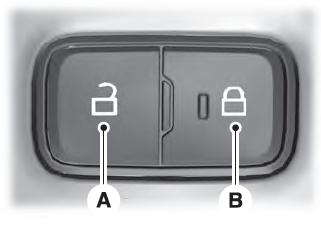Lincoln Aviator 2020-2025 Service Manual / Body and Paint / Body and Paint / Front End Body Panels / Removal and Installation - Fender
Lincoln Aviator: Front End Body Panels / Removal and Installation - Fender
Special Tool(s) / General Equipment
| Knife |
Materials
| Name | Specification |
|---|---|
| Flexible Foam Repair 3M™ 08463, LORD Fusor® 121 |
- |
Removal
NOTE: Removal steps in this procedure may contain installation details.
NOTE: RH shown, LH similar.
-
Remove the fender splash shield.
Refer to: Fender Splash Shield (501-02 Front End Body Panels, Removal and Installation).
-
Remove the headlamp assembly.
Refer to: Headlamp Assembly (417-01 Exterior Lighting, Removal and Installation).
-
-
Remove the retainers.
-
Gently pull up to release the clips and remove the RH hood air deflector.
-
Remove the retainers.
.jpg) |
-
Remove the retainers and the fender flange finisher.
.jpg) |
-
Remove the nut and the cover.
Torque: 80 lb.in (9 Nm)
.jpg) |
-
Remove the stud.
Torque: 97 lb.in (11 Nm)
.jpg) |
-
Remove the rocker panel moulding.
Refer to: Rocker Panel Moulding (501-08 Exterior Trim and Ornamentation, Removal and Installation).
-
Remove the bolts.
Torque: 97 lb.in (11 Nm)
.jpg) |
-
Remove the bolt.
Torque: 97 lb.in (11 Nm)
.jpg) |
-
NOTE: Follow the unique installation step when installing the fender.
Using a knife, cut the foam sealant between the fender and the body.
Use the General Equipment: Knife
.jpg) |
-
Remove the following items:
-
Remove the bolts.
Torque: 97 lb.in (11 Nm) -
Remove the fender.
-
Remove the bolts.
.jpg) |
-
Remove any excess debris left on the body.
.jpg) |
-
NOTE: This step is only necessary when installing a new component.
Pull and remove the front fender plate assembly.
.jpg) |
Installation
-
To install, reverse the removal procedure.
-
Before installation of the fender, apply a continuous
stream of Fusor® 121 material along the entire span of the baffle-body
attachment area.
Material: Flexible Foam Repair / 3M™ 08463, LORD Fusor® 121
.jpg) |
 Removal and Installation - Engine Rear Undershield
Removal and Installation - Engine Rear Undershield
Removal
NOTE:
Removal steps in this procedure may contain installation details.
Remove the Engine front undershield.
Refer to: Engine Front Undershield (501-02 Front End Body Panels, Removal and Installation)...
 Removal and Installation - Fender - Plug-In Hybrid Electric Vehicle (PHEV)
Removal and Installation - Fender - Plug-In Hybrid Electric Vehicle (PHEV)
Special Tool(s) /
General Equipment
Knife
Materials
Name
Specification
Flexible Foam Repair3M™ 08463, LORD Fusor® 121
-
Removal
NOTE:
Removal steps in this procedure may contain installation details...
Other information:
Lincoln Aviator 2020-2025 Service Manual: Removal and Installation - A-Pillar Outer Panel Section and Reinforcement
Special Tool(s) / General Equipment Resistance Spotwelding Equipment Spherical Cutter Hot Air Gun Air Body Saw 8 mm Drill Bit MIG/MAG Welding Equipment Spot Weld Drill Bit Locking Pliers Materials Name Specification Seam SealerTA-2-B, 3M™ 08308, LORD Fusor® 803DTM - Flexible Foam Repair3M™ 08463, LORD Fusor® 121 - Removal WARNING: Electric vehicles damaged by a crash may have compromised high voltage safety systems and present a potential high voltage electrical shock hazard...
Lincoln Aviator 2020-2025 Service Manual: Removal and Installation - Oil Cooler
Special Tool(s) / General Equipment Hose Clamp Remover/Installer Locking Pliers Removal NOTICE: During engine repair procedures, cleanliness is extremely important. Any foreign material, including any material created while cleaning gasket surfaces, that enters the oil passages, coolant passages or the oil pan, can cause engine failure...
Categories
- Manuals Home
- Lincoln Aviator Owners Manual
- Lincoln Aviator Service Manual
- Description and Operation - Jacking and Lifting
- Disabling Auto-Start-Stop
- Description and Operation - Body and Frame
- New on site
- Most important about car
Locking and Unlocking the Doors from Inside

Locking the Doors
Press the lock switch on the door interior trim panel. The doors can no longer be released using the exterior door handle switches and the luggage compartment locks.
Copyright © 2025 www.liaviator2.com
